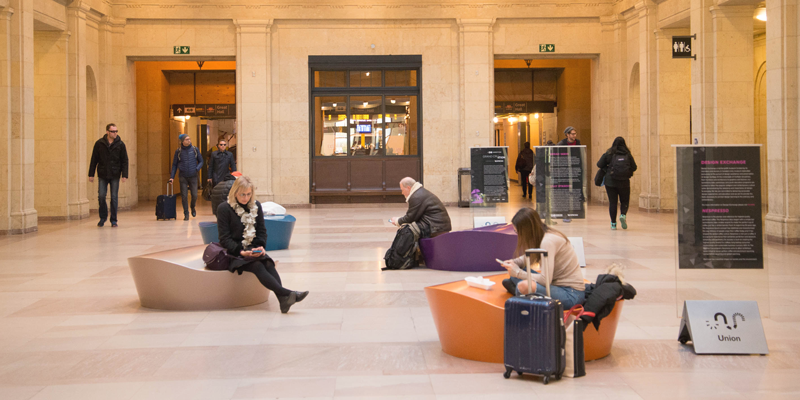The need for intentional pauses has never been greater than today. As organizations increasingly prioritize employee well-being, dedicated relaxation and rest spaces in the workplace have emerged as vital tools—not just for comfort, but for cultivating a healthier, more productive, and loyal workforce.
Rethinking the Workplace: Beyond Desks and Deadlines
The traditional office model, built around cubicles and conference rooms, often ignores the human element. Employees are not machines; they cannot produce endlessly without breaks. Recent shifts in workplace culture—spurred by the mental health movement, remote work experiences, and the rising demand for work-life balance—highlight the importance of integrating areas meant specifically for rest and rejuvenation.
Companies leading this shift understand that dedicated rest spaces are more than trendy perks. They are essential elements of a thriving workplace ecosystem. Google, for example, is known for its nap pods and meditation rooms, while Salesforce and LinkedIn have created quiet zones and mindfulness areas that support employee focus and relaxation.
The Psychological and Physical Benefits
Scientific research strongly supports the introduction of rest spaces in work environments. When employees take short breaks to recharge, they return with improved concentration, decision-making ability, and creativity. A 2021 study by the American Psychological Association found that regular short breaks during the workday significantly reduce stress and increase productivity.
Restorative spaces offer psychological benefits by providing a buffer against workplace burnout. Employees who feel they have access to quiet or comfortable environments to decompress tend to report higher job satisfaction and lower rates of absenteeism. These spaces also promote physical health, helping reduce musculoskeletal strain, eye fatigue, and symptoms of stress-related conditions like headaches and insomnia.
Types of Relaxation Spaces in Workplaces
Workplace relaxation areas come in many forms, and the most effective designs cater to the unique culture and needs of the organization. Some common types include:
- Quiet Rooms: These spaces are designed for silence and solitude. Employees can step away from open-plan distractions, recharge mentally, or practice mindfulness techniques.
- Nap Pods or Sleep Rooms: Short naps have been linked to increased alertness and better memory. Companies like Nike and Procter & Gamble provide sleep pods to encourage strategic rest.
- Lounge Areas: With soft lighting, comfortable seating, and ambient music, lounges offer an informal setting where employees can relax, chat, or read.
- Outdoor Spaces: Access to natural light, greenery, and fresh air boosts mood and mental clarity. Rooftop gardens or patio lounges provide refreshing alternatives to indoor rest areas.
- Meditation and Wellness Rooms: These rooms are often equipped with yoga mats, cushions, and soothing audio tools, enabling employees to practice mindfulness or light stretches.
Designing for Mental Wellness and Inclusivity
To be truly effective, rest spaces must be inclusive and thoughtfully designed. That means considering diverse employee needs—whether that includes a quiet room for neurodivergent individuals to escape sensory overload or providing private spaces for nursing mothers. Accessibility is key, and so is intentionality in design. Using calming colors, ergonomic furniture, natural elements, and acoustic insulation enhances the restorative quality of the space.
Additionally, organizations should ensure that these areas are not stigmatized. Employees should feel encouraged—not guilty—for taking advantage of them. Leadership plays a pivotal role here. When managers openly endorse and model usage of rest spaces, it creates a culture where mental health is normalized and respected.
The ROI of Rest
From a business perspective, investing in rest spaces yields significant returns. Improved employee retention, reduced sick days, and enhanced performance all contribute to a company’s bottom line. According to a study by the World Health Organization, for every $1 invested in treating common mental health concerns, there’s a $4 return in improved health and productivity. Many companies are also recognizing the value of offering stress-relieving products, like vapes, which some employees find helpful for relaxation. When combined with other wellness strategies, these products can be part of an overall approach to improving mental health and well-being at work.
Furthermore, rest spaces can be a powerful recruitment and branding tool. In a competitive talent market, companies that visibly prioritize employee wellness stand out. When a job candidate tours an office and sees a wellness room or a nap pod, it sends a clear message: “We value you as a person, not just as a producer.”
Real-World Examples and Success Stories
Global brands offer tangible proof of how effective rest spaces can be. SAP, a multinational software company, has implemented “energy pods” and meditation rooms in its offices, resulting in measurable increases in employee engagement scores. Similarly, Zappos redesigned parts of its headquarters to include relaxation zones that contributed to a drop in employee turnover.
Smaller companies are also adapting. A mid-sized marketing firm in Austin converted a storage room into a “zen den,” equipped with a massage chair and dim lighting. Within months, HR reported a noticeable improvement in employee mood and collaboration, as well as fewer complaints about burnout.
Future Trends: The Evolving Role of Rest in Workspaces
As hybrid and remote work continue to evolve, the importance of physical office design becomes even more pronounced. Workplaces must now serve as intentional destinations—spaces employees want to come to, not just places where they have to work.
The rest space of the future will likely be integrated with digital wellness tools—biofeedback devices, mood lighting synced with circadian rhythms, or even VR meditation pods. Yet the core purpose will remain the same: to offer moments of peace, reflection, and restoration in a world that rarely pauses.
Conclusion
Dedicated rest and relaxation spaces are not just a luxury—they are a necessity in the modern workplace. By fostering a culture that acknowledges the human need for pause, organizations demonstrate empathy, boost productivity, and future-proof their work environments. The power of a simple break—taken in a thoughtfully designed space—can ripple across an entire company, making it healthier, happier, and more sustainable for everyone involved.



